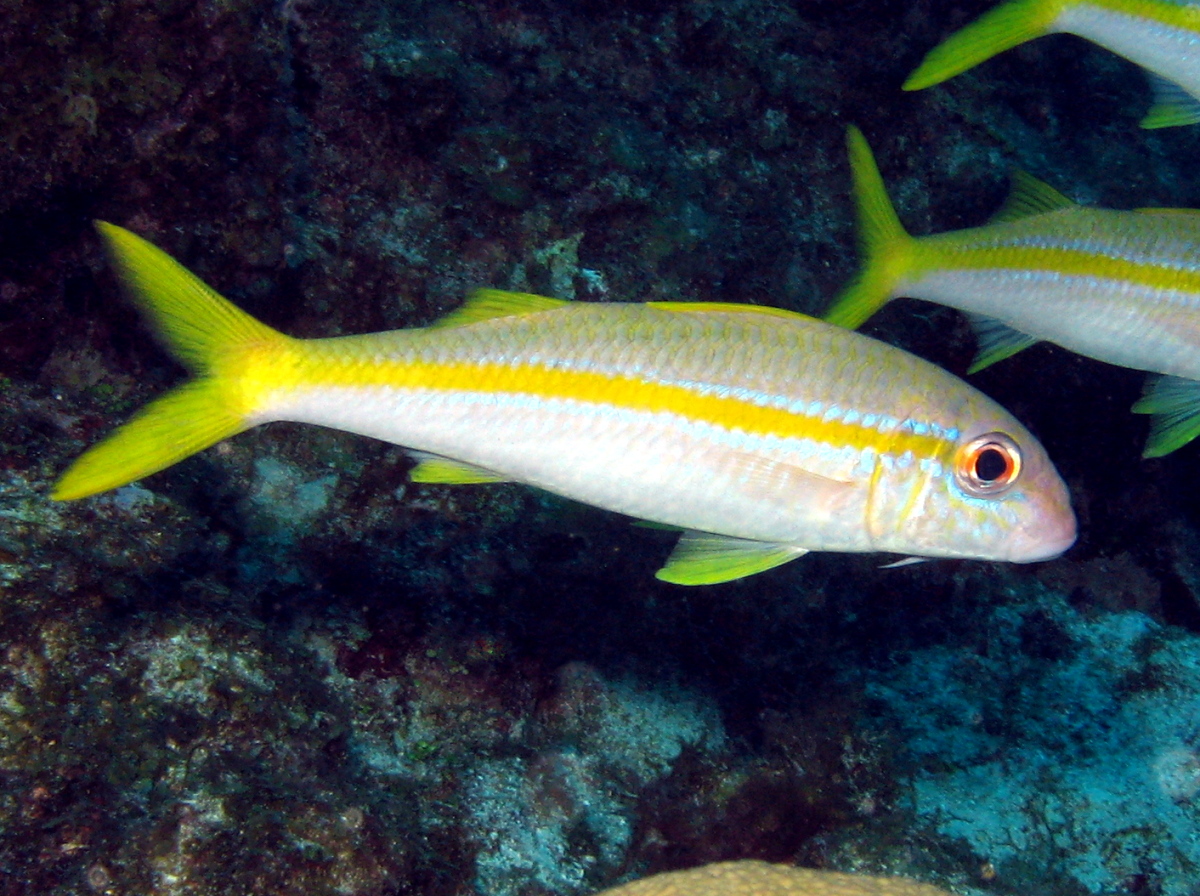
Mulloidichthys martinicus
FAMILY
Mullidae
TAXONOMY
Mulloidichthys martinicus Cuvier and Valenciennes, 1829, Martinique
Island, West Indies.
OTHER COMMON NAMES
French: Poisson chиvre jaune.
PHYSICAL CHARACTERISTICS
Twin barbels on the lower jaw, a relatively short snout, the
body elongate with two well-separated dorsal fins, two spines
in the anal fin, and a forked caudal fin. There are 36–37 lateral
line scales from the upper gill opening to the base of the caudal
fin. These fishes are bronze and pale yellow in color with a
yellow median stripe that extends along the length of the body,
and grow to 12 in (30 cm) total length.
DISTRIBUTION
Western Atlantic, from Bermuda southwest to Florida and the
Gulf of Mexico, and south from the Bahamas to Brazil.
HABITAT
Coral reefs and flats of sand or rubble.
BEHAVIOR
Swims lazily or hovers in schools above the bottom during the
day and forages after dark.
FEEDING ECOLOGY AND DIET
Feeds by probing the bottom with its barbels in search of prey,
usually at night or during low-light periods. The diet includes annelid
worms, crabs, ophiurans, and to a lesser extent, small fishes.
REPRODUCTIVE BIOLOGY
Spawns in aggregations and produces pelagic eggs and larvae.
Eggs are spherical and small, between 0.024–0.036 in (0.63–0.93
mm) in diameter. Larvae hatch between 0.063–0.134 in (1.6–3.4
mm) in length, are elongate, and have a large yolk sac, unformed
jaws, and unpigmented eyes. Body pigmentation develops with
absorption of the yolk sac. Possesses a gas bladder and a short
gut. The barbels form at about 0.67–0.71 in (17–18 mm) but remain
recessed under the lower jaw. Post-larvae appear capable of
a relatively long pelagic phase prior to settlement.
CONSERVATION STATUS
Not listed by the IUCN.
SIGNIFICANCE TO HUMANS
Highly esteemed as a food fish and taken in subsistence and local
commercial fisheries.
Photo Gallery of - Yellow goatfish

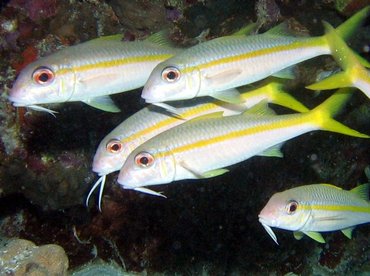
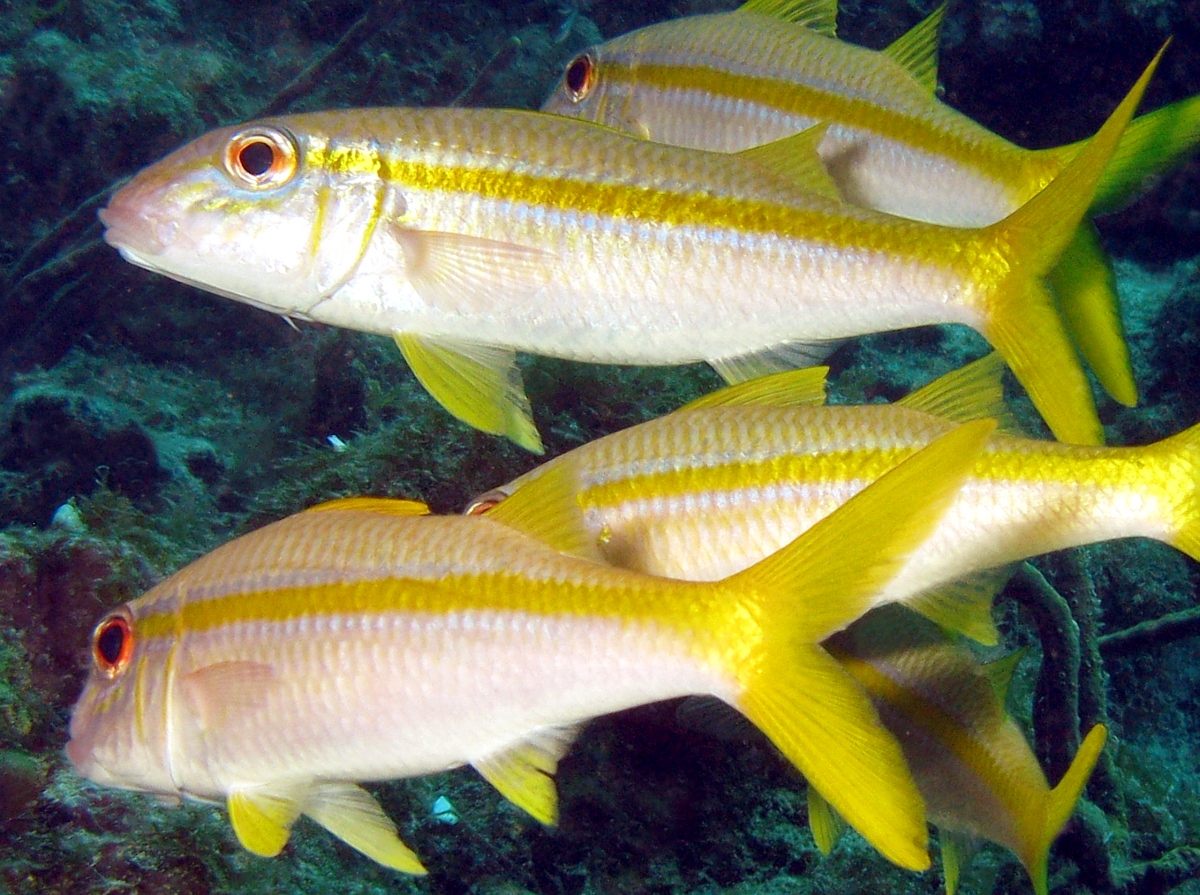
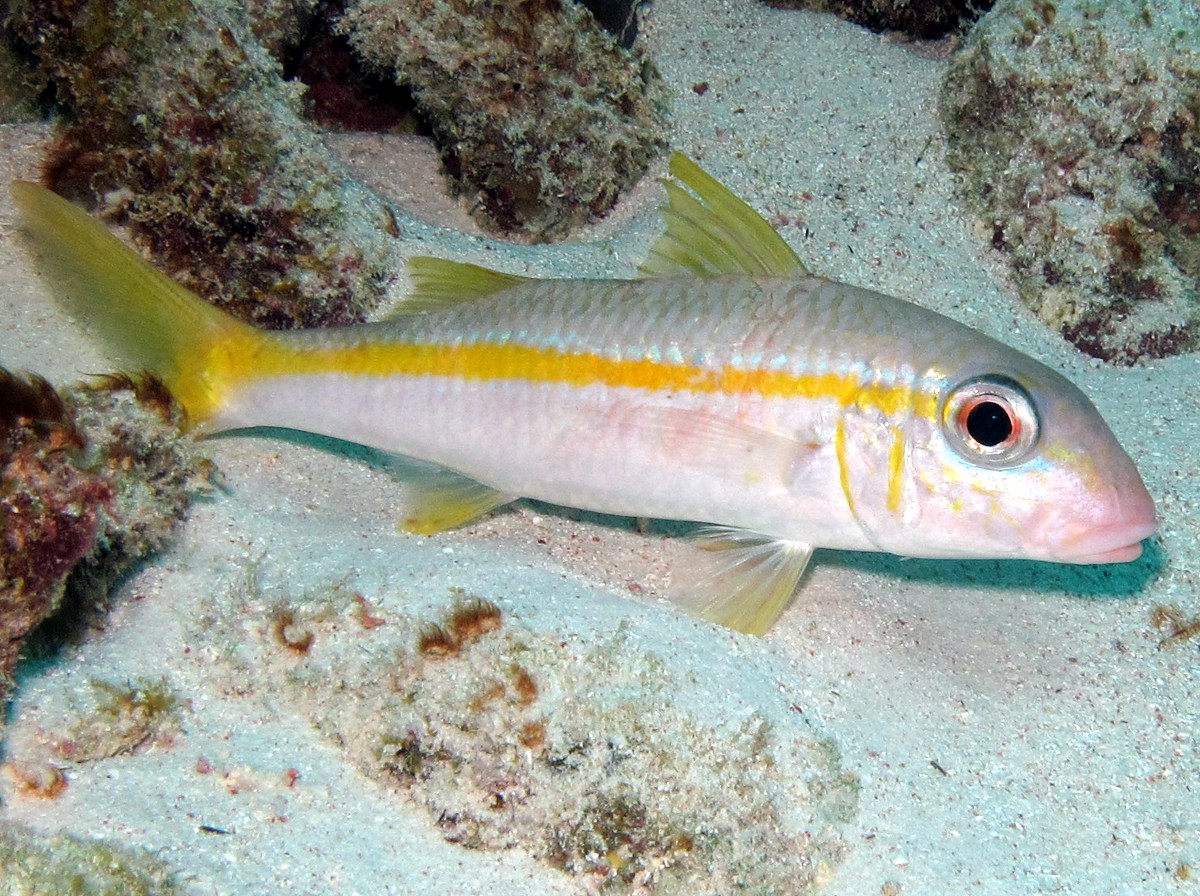
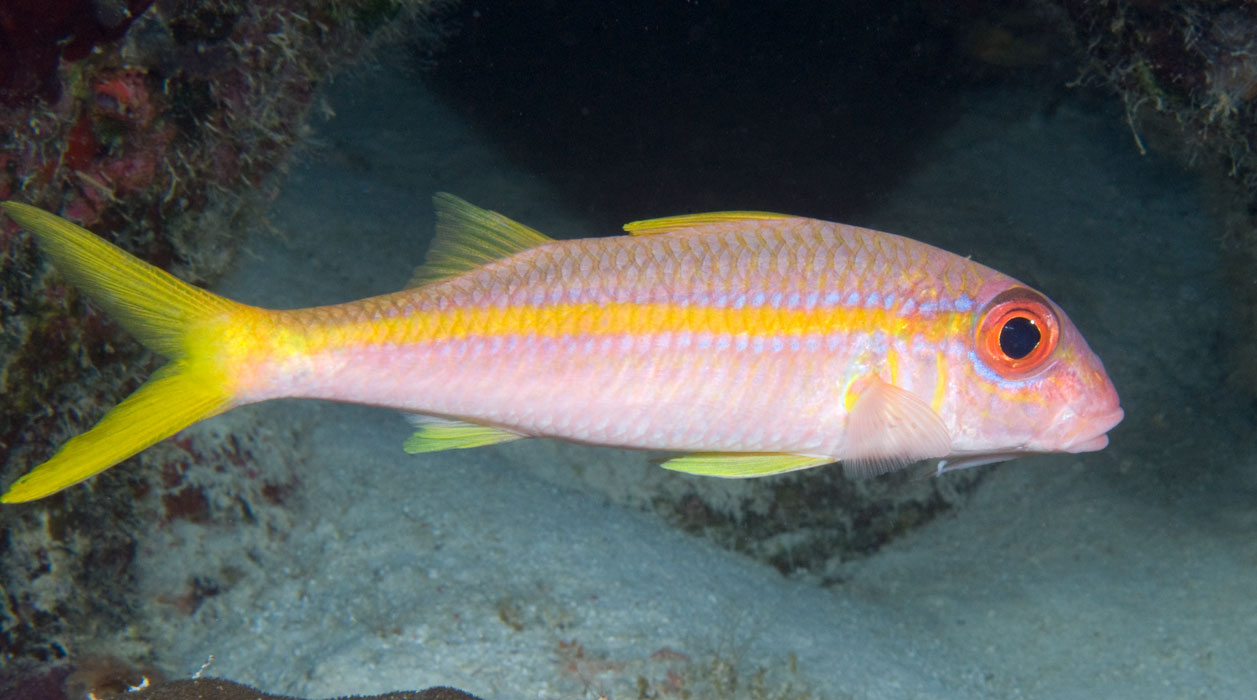
 Animalia Life
Animalia Life